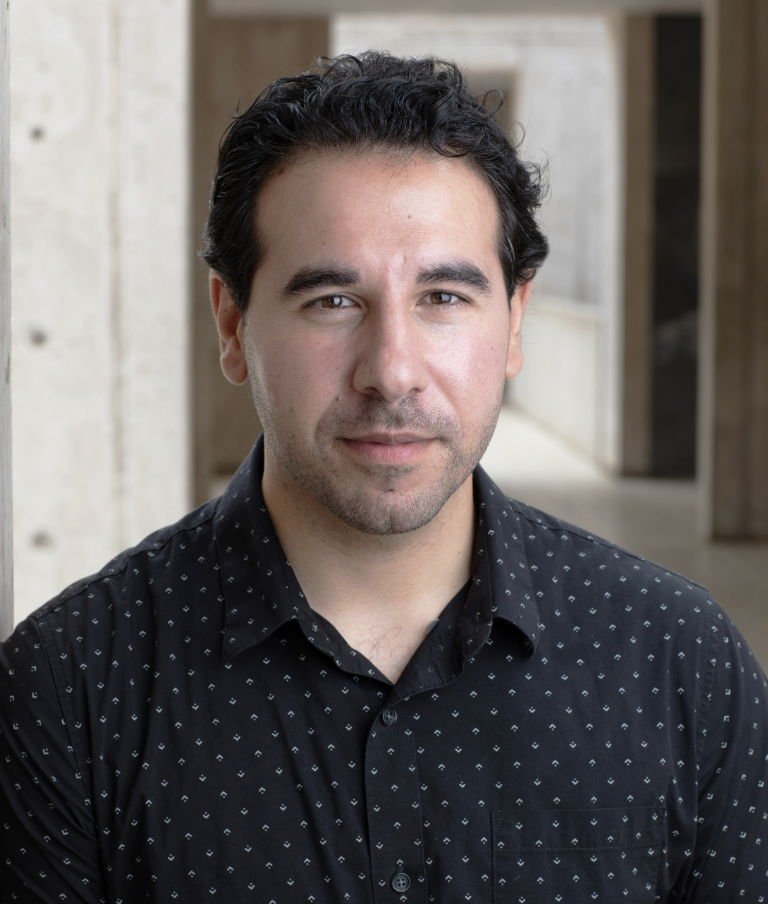Meet the Scientist
Dr. Joe Nassour
Assistant Professor
Department of Biochemistry and Molecular Genetics
Aging, Inflammation and Cancer! Oh My!

How do the protective caps on the ends of our chromosomes play a role in health and disease?
Out of the approximately 30 trillion cells that make up your human body, about 330 billion die and are replaced every single day. That’s a whole lot of cell turnover throughout the course of a human lifetime! But what causes these cells to hit the start button on the cellular ‘self-destruct’ process that leads to their death? And when undergoing the process to make more copies of cells – cell division – how do they make sure they are copying their genetic material without any errors? Dr. Joe Nassour is a scientist on the CU Anschutz campus who is working hard to answer these questions and more!
Telomeres are the ‘safety caps’ on the ends of our generic material
To prevent mistakes, cells use special 'safety caps' called telomeres on the ends of their genetic material. These telomeres act like the eraser at the end of a pencil, keeping the genetic material safe during cell division. As cells divide over time, these telomeres naturally wear down and shorten, like the eraser at the end of a pencil getting shorter with each use. This shortening process helps prevent the cells from dividing too many times and potentially becoming cancerous.
Once the telomeres are too short, the cell is in crisis and knows it has reached the end of its natural life and hits the ‘start’ button on the process to self-destruct (also called ‘programmed cell death’). Basically, scientists have found that cells have built-in safety measures to keep things running smoothly and avoid problems, like cancer, by knowing when it’s time to self-destruct to maintain health in the body. So, while telomere shortening may sound concerning, it's actually a clever defense mechanism our bodies use to protect us from harm!
Once the telomeres are too short, the cell is in crisis and knows it has reached the end of its natural life and hits the ‘start’ button on the process to self-destruct (also called ‘programmed cell death’). Basically, scientists have found that cells have built-in safety measures to keep things running smoothly and avoid problems, like cancer, by knowing when it’s time to self-destruct to maintain health in the body. So, while telomere shortening may sound concerning, it's actually a clever defense mechanism our bodies use to protect us from harm!
How do telomeres (aka ‘safety caps’) work to keep cells healthy?
Understanding how these 'safety caps' or telomeres work will help scientists find ways to keep our cells healthy and prevent diseases.
Dr. Joe Nassour and his research team are focused on understanding the relationship between telomeres, aging, and cancer. They believe this research is crucial for developing strategies to prevent, diagnose, and treat cancer effectively, particularly in the context of an aging population.
We know that aging is often accompanied by increased levels of inflammation, which can significantly impact our health. While inflammation is an important response by our immune system to threats like infections or injuries, chronic inflammation can lead to tissue damage and the development of various age-related diseases such as obesity, diabetes, heart issues, Alzheimer's, and cancer.
Dr. Joe Nassour and his research team are focused on understanding the relationship between telomeres, aging, and cancer. They believe this research is crucial for developing strategies to prevent, diagnose, and treat cancer effectively, particularly in the context of an aging population.
We know that aging is often accompanied by increased levels of inflammation, which can significantly impact our health. While inflammation is an important response by our immune system to threats like infections or injuries, chronic inflammation can lead to tissue damage and the development of various age-related diseases such as obesity, diabetes, heart issues, Alzheimer's, and cancer.
Why is the research that Joe and his team work on in their lab so important?
Understanding the underlying causes of age-associated inflammation has also been a key focus of Dr. Nassour’s research. Joe has published several recent studies that have connected the processes of telomere shortening and inflammation during aging. When telomeres become critically short, they signal stress to the cell which triggers an inflammatory response. Understanding this connection has shed light on why inflammation increases as we age. With this knowledge, scientists can explore ways to slow down or halt this process, potentially leading to new and beneficial treatments that promote healthier aging and limit cancer cells from dividing and expanding.
If you want to learn more about the scientist, please head to their official CU webpage.